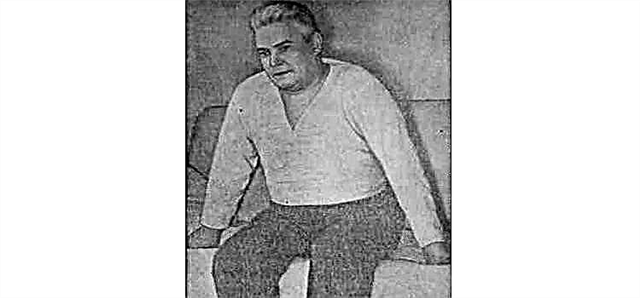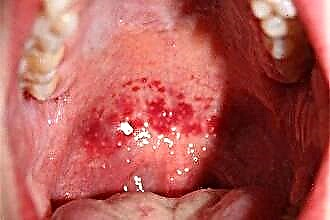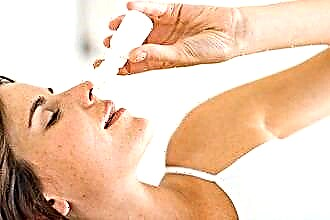Inflammation of the ear is one of the most frequent complications of respiratory diseases, childhood infections, sinusitis and other ENT pathology, which occurs with edema and the formation of mucus in the auditory tube. For the most part, this condition is characterized by a mild course. With timely consultation with an otolaryngologist, correct treatment, the disease is prone to regression in the next few days.
However, it is in children that the transformation of catarrhal inflammation into acute purulent otitis media is often noted. In his publications, speeches in TV programs, Komarovsky E.O. more than once touched on this topic. This is due to the widespread prevalence of otitis media among children. There are statistics that up to the age of three, almost the entire population of the post-Soviet countries at least once met with ear inflammation.
Development mechanism

According to modern otolaryngologists and Komarovsky E.O, ear pain in a child develops when the evacuation function of the auditory tube is disturbed. The resulting congestion in the middle ear leads to the development of catarrhal inflammation and pain in it. All efforts in this case should be aimed at removing the edema and improving the patency of the auditory tube.
If a child has a sore ear, Komarovsky considers it necessary to use vasoconstrictor nasal drops. The use of these funds will help relieve nasopharyngeal edema, reduce mucus, and improve the drainage function of the Eustachian tube.
Among the recommended ear drops, the expert suggests using
- naphthyzine;
- galazolin;
- tizine.
When using them, it must be remembered that they can be addictive and the development of other concomitant effects. The duration of their intake should not exceed 7 days.
Pain relief agents
The next area of treatment is the use of painkillers.
If a child's ears hurt, Komarovsky suggests using non-steroidal anti-inflammatory drugs (preferably paracetamol).
 This remedy is not only an effective analgesic, but also a safe remedy for the child's body.
This remedy is not only an effective analgesic, but also a safe remedy for the child's body.
Air movement and sound vibrations aggravate pain in the ear. To create peace for the affected ear, experts recommend using cotton wool. By inserting it into the external auditory canal, you can ensure that no touching the auricle or the skin of the outer ear will increase the pain.
With regard to the use of dry heat or compress for the treatment of otitis media in children, the expert opinion is negative.
Komarovsky E.O. considers carrying out any physiotherapy procedures in children ineffective or dangerous.
The doctor claims that the use of physiotherapy has a calming effect only on the parents of the child, creating the appearance of taking emergency measures. As for the direct benefits of their use, there are no scientific works with an evidence base on the effectiveness of physiotherapeutic treatment. It is precisely the immobilization of the ear that he determines the need for the use of cotton wool.
The value of otoscopy
Further actions become possible only after consulting an otolaryngologist. After applying paracetamol, instilling vasoconstrictor nasal drops and closing the external auditory canal with a cotton turunda, the child should be taken to a hospital for consultation with an otolaryngologist. In case of ear inflammation, a specialist must necessarily examine the patient, conduct an instrumental examination of the tympanic membrane, and only then prescribe the correct treatment.
Otitis media can be catarrhal and purulent.
Perforation of the tympanic membrane and suppuration indicate the development of purulent inflammation and the need for antibiotics.
At the same time, an injured eardrum is a contraindication to the use of topical preparations containing ototoxic components.
Hazardous substances that should not be contained in used ear drops are
- some antibiotics (gentamicin, kanamycin, neomycin);
- ethanol;
- non-steroidal anti-inflammatory drugs.
 Thus, Otinum and Otipax ear drops, which are widely used for catarrhal otitis media, cannot be used in the presence of a perforated tympanic membrane. At the same time, the use of ear drops containing safe antibiotics is very reasonable in this condition.
Thus, Otinum and Otipax ear drops, which are widely used for catarrhal otitis media, cannot be used in the presence of a perforated tympanic membrane. At the same time, the use of ear drops containing safe antibiotics is very reasonable in this condition.
In case of catarrhal inflammation, the use of local antibiotics is impractical, since the complete tympanic membrane does not allow them to penetrate into the middle ear cavity.
Other causes of ear pain
A child's ear pain can be caused by a number of other reasons, such as lymphadenitis, dental disease, inflammation of the oral mucosa, or traumatic injury. Lymphadenitis is characterized by an increase in lymph nodes, which appear in the form of rounded formations and are caused by an inflammatory process in the nasopharynx or oral cavity. According to Komarovsky E.O., a lump behind the ear in a child should cause concern if
- a rapid growth of this formation is found, and an enlarged lymph node persists for more than 5 days;
- soreness of education is noted;
- there is redness of the skin over the lymph node;
- there is a local increase in temperature in the area of an enlarged lymph node.
Enlarged lymph nodes characterize some other, more dangerous pathological conditions, such as immunological diseases, tumor processes. With an increase in lymph nodes, the child should be examined by a doctor. A general blood test, which reflects the changes occurring in the lymph nodes, can help in the diagnosis. It also contributes to the diagnosis of ultrasound of these formations, which makes it possible to determine the nature of the content, its structure. In some cases, antibiotic therapy or surgery may be prescribed.
First aid
Thus, answering the question of what to do if a child's ear hurts, Komarovsky E.O. invites parents, first of all, to examine the child for the presence of visible lesions of the oral mucosa or the skin of the parotid region, to pay attention to nasal congestion and other signs of respiratory diseases or childhood infections. If there are signs that indicate involvement in the process middle ear, the following steps must be taken:
middle ear, the following steps must be taken:
- Instill vasoconstrictor drops into the child's nose;
- Close the opening of the external auditory canal with a cotton swab or turunda;
- The child must take an anesthetic by mouth or in the form of suppositories;
- In the near future, the child should be examined by an otolaryngologist to clarify the diagnosis and prescribe the correct treatment.
It is strictly forbidden to use ear drops with any components without a doctor's prescription. At the same time, a timely consultation with an ENT doctor and the prescribed treatment will prevent the development of severe complications and the transition of the disease into a chronic form.



